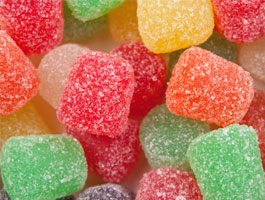

Low- and Reduced Calorie Sweeteners and Dietary Fiber Low-calorie foods and beverages provide consumers with many benefits, both psychological and physiological. Health professionals and consumers believe low-calorie products, including low-calorie sweeteners, are effective for the following purposes: weight maintenance, weight reduction, management of diabetes, reduction of dental caries and reduction...
Read More
Sorbitol, a polyol (sugar alcohol), is a bulk sweetener found in numerous food products. In addition to providing sweetness, it is an excellent humectant and texturizing agent. Sorbitol is about 60 percent as sweet as sucrose with one-third fewer calories. It has a smooth mouthfeel with a sweet, cool and...
Read More